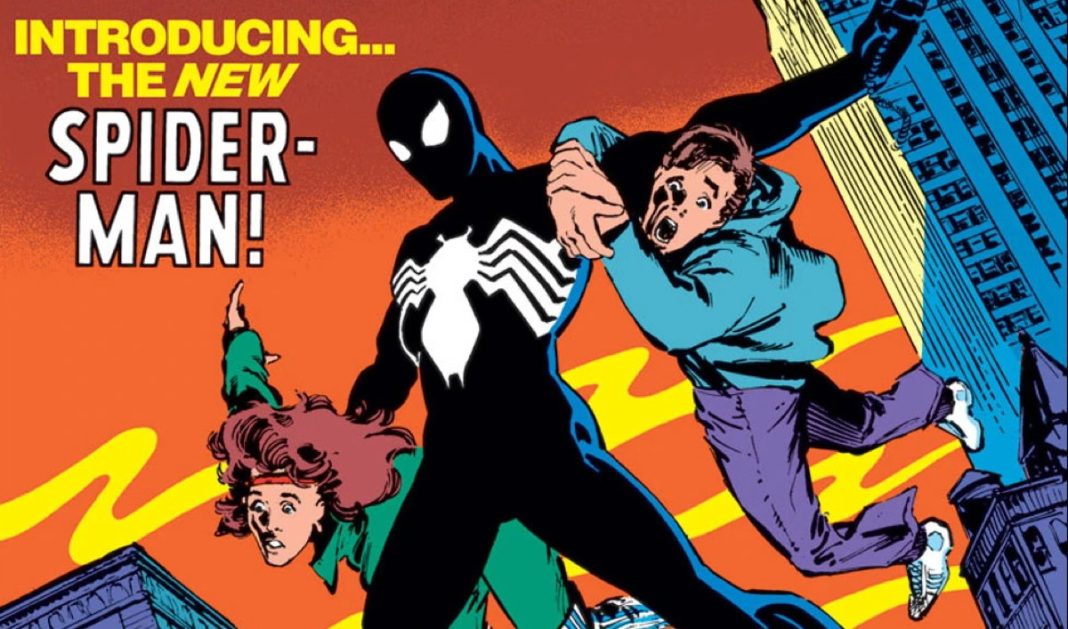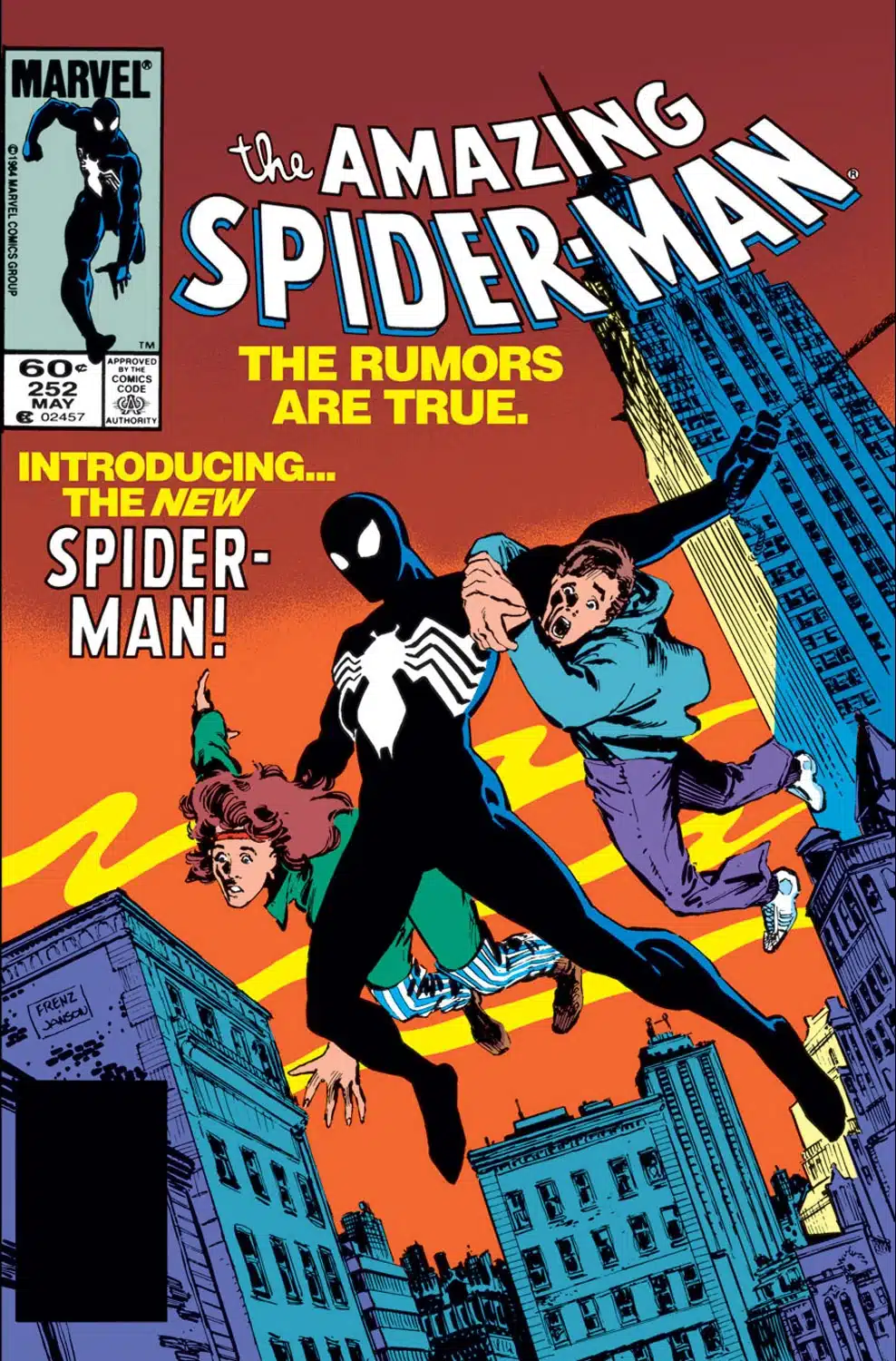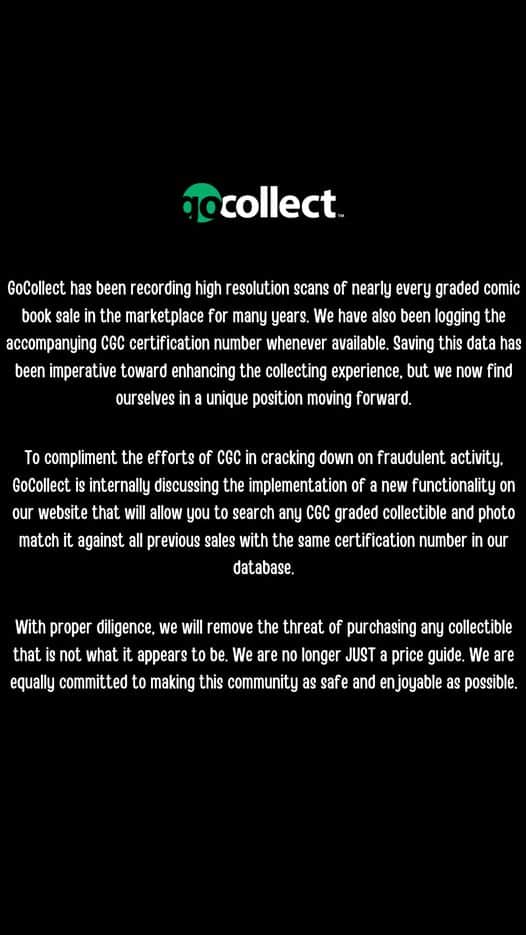While The Beat doesn’t often cover the high stakes world of collecting super valuable comics, a slabbing scandal has rocked this corner of comics that threatens the very foundations of trust that world is built on.
The scandal involves CGC (Certified Guaranty Company), the company that rigorously grades and then slabs (encases in plastic) comics for collectors, complete with a seal of authenticity. You’ve undoubtedly seen their booths at tables at cons, and many collectors have availed themselves of CGC’s services to grade their comics for bragging rights and resale. During the pandemic, collecting all kinds of stuff got super hot, and prices soared. There is a whole giant world of websites, apps, YouTube channels and other companies that take part in the collecting world – and it’s fair to say it’s another multi-million dollar facet of the industry: the aftermarket.
Personally I find the idea of slabbing anything antithetical to my nature. I like to read comics and hold trading cards. And certainly, you can argue that the whole idea of “collectibility” has led to the variant plague and created an ecosystem that damages the comics industry. But comics collecting as a hobby is pretty foundational to comics history as well, so with this in mind, let’s begin.
Details of the “CGC Scandal” as it’s known (I guess Slab-gate was taken), broke over the Christmas holiday and it has mostly been covered in YouTube videos. Even a brief dive into writing about it became very time consuming and made me quickly learn such terms as “grade and trade” “GPA for CGC” and “Mark Jewelers variant.” Also “heat gun.” So what follows is certainly a laypersons view of a very complicated matter. However, I’ve spoken to a few trusted friend who straddle both worlds who tell me this is a serious development, so I’ll do my best. Since I am not a native speaker of the language in which the scandal has been talked about, I may have a few points wrong – I’m open for corrections.
Okay here’s the short version: a scammer (possibly more than one scammer) would buy a valuable comic in a high grade, say a 9.8 Hulk #181 (first Wolverine) and send it to CGC to grade, authenticate and slab. Then, using various tools, they would open the slab, swap in a lesser grade comic, then send THAT comic to CGC to be “reholdered” in a new slab and then sell the less valuable comic at the first price. A comic can be reholdered when the slab is damaged, hence the loophole.
As of this writing, CGC has announced that at least several hundred comics were affected by this scam. The matter was seemingly uncovered when the alleged fraudster got a little too cocky and listed too many super rare “Mark Jeweler variants” on eBay, raising suspicions.
A cursory amount of digging on my part uncovered a post on the CGC message board which seems to be a fairly concise timeline of how the scandal unfolded. The first alarms were raised by an Instagram post by @then.9newstand which charged that a “Mark Jeweler” variant of Spider-Man #252 (first black costume) that sold for $15,700 was not actually a 9.8 grade copy of the book. Even to my untrained eye, it’s pretty obvious that one of the books has damage to the corners.
This post sent shockwaves through the collecting community and the making videos about comics collecting on YouTube community. I’ll skip a few steps (because it’s too long) but the next event that you might be interested in is this chilling video from Immaculate Comics that shows how “easily” a slab can be opened with a heat gun and some tools and resealed to look convincing.
I say “easily” because all these crafting videos exhaust me as much as that video about filling the watermelon with matches. For the uncrafty, all this effort seems herculean. But people have done more for less money, I guess.
From there the outcry grew, and as ComicBook.com reported, CGC was forced to make a statement on December 28th. It read:
The Certified Collectibles Group is aware of an incident involving an individual tampering with CGC Comics holders.
The Certified Collectibles Group® (CCG®), which includes Certified Guaranty Company® (CGC®), is aware of an incident involving an individual tampering with CGC Comics holders. Based on our initial review, we believe that the incident affects a few hundred comic books.
CCG exists to protect the collecting community, and in the last 36 years we have certified more than 85 million collectibles, each one backed by a comprehensive guarantee. The trust that we have built with our community sometimes makes us a target of bad actors and, despite our vigilance, this individual tampered with some of our holders.
If you purchased one of the books that this individual tampered with, we will ensure that you are appropriately compensated for losses arising from any failures in our services. We expect to share a list of books that we believe are impacted as soon as possible.
We have also retained a leading private investigative service and outside counsel to conduct a comprehensive review of this incident and our processes, and to help ensure that this individual is held accountable to the fullest extent of the law. We have already made significant improvements to our processes as a result of this incident, and we will continue to take appropriate steps to help ensure that this type of incident does not happen again.
We expect to share more information when we have it. In the meantime, if you have any questions or would like to share any information with CCG, please reach out to us at [email protected].
Obviously a few hundred fraudulent highly valuable comics circulating in the market is pretty bad, but the whole matter shook trust with the CGC system itself. The “reholdering” loophole seems rife for exploiting when you see how easily it’s done (although you would have to invest in some very valuable books to start with.) But apparently it also unearthed any lingering worries about CGC that had existed for a long time. ***
If you want to dig deeper into this, there’s a Reddit post, natch, and also this very long article from a finance blog. And from there you can dig deeper and deeper and deeper. For instance, @the9.9Newsstands last post on the matter was a video entitled “Can trust be Re-holdered?” and he wrote “Our voices are being heard. Let’s continue to use them!
@west_coast_davengers, the community (you), and myself will be discussing the potentially uncomfortable realities that we will almost certainly face on our way to a safer, more secure, collecting future. And, let’s unpack the why(s) behind them.
The change is happening. But there is a lot more work to do. Let’s talk about it all. See you tonight! Ty”
The CGC message board topic on this now goes to 332 pages – and just looking at the last few pages, even more elements of the collecting ecosystem are being forced to confront the scandal. For instance, the price guide GoCollect posted on FB:
As of now, a lot of questions are being asked, and a lot of collectors are rightfully upset and worried that there are even more fraudulent comics out there. As one poster on that monster CGC board thread put it:
I think a lot of people are in wait and see mode on purchasing many bigger books or books which may have traveled through circles which the alleged scammer operated with. The problem is that so many sales are though venues which are not reported online that it’s going to take a while before people have a better grasp on how many have been impacted.
So there you have it. Even more doubts and worries in an uncertain world. At the very least, CGC is going to have to adopt new policies to make sure this can’t happen again. And a lot of books are going to be scrutinized. And for those who think the whole “collectors mentality” is a blight on the industry…well that’s a whole ‘nother blog post.
Oh and if you’re wondering what a Mark Jewelers variant is, its a type of Marvel/DC variants that were sold sporadically in the 70s with a four page insert advertising jewelry:
These special variant comics were only sold near the United States military establishments in the United States and overseas. The intent is to assist soldiers to buy jewelry for their significant individual back at home. Their jewelry that was available to buy included rings, watches, necklaces, and more.
*** PS: I am aware that the very existence of CGC and its practices is hugely controversial. I’ll leave that discussion to the comment section for now.











Historical note: The practice of adding “-gate” at the end of every scandal name started with William Safire, former Nixon speechwriter who had a column in the New York Times. Safire, who understood the importance of language, set out to add the “-gate” sobriquet to every scandal name, to dilute the significance of Watergate in the popular memory.
Nice recap. Even if I collect comics (non-cgc), I only had part of the bigger pictures for this “scandal”
I read that headline as a “Stabbing” scandal, and kept waiting for the real juice…
I am really happy to see this scandal getting covered here. Great summary, Heidi.
My lukewarm take, for what it’s worth, is that CGC and other so-called professional grading companies have never really offered the standard of service required for the role they claim to play. Now a certain section of the collecting community is starting to realize that fact — because scammers have taken advantage of that poor standard of service.
Long version — strap in if you are interested, skip if not.
We all know that even a mid-grade copy of a book such as Amazing Fantasy #15 will sell for multiple of thousands of dollars (even in the wake of the post-Covid collectible downturn, which is a whole other thing).
So there is — in these rare cases — a genuine need for an expert, neutral, accredited, trustworthy third-party grading service. It makes sense that someone might want an expert to verify that a book is genuine and unrestored before dropping hundreds of thousands on it.
But I am not sure that a genuinely expert, accredited, trustworthy service has ever been offered by CGC.
I don’t know, for example, that many (any?) members of their staff have degrees in paper restoration, or real museum experience, or training in the appraisal of art objects or rare books from an accredited institution. Their turnaround speed does not lead me to believe that they are really treating all the books they receive to an identical and exacting standard of review. And they generally do not supply detailed explanations for their judgements (grader notes) — something you’d expect from pretty much any established equivalent service in the larger world of high-end collecting (art objects, rare books, etc).
But it’s actually even worse than that. The problem is not just that they are not really any more qualified to grade a book than a smart, informed and experienced dealer or fan. CGC also charges a percentage of the perceived value of the book to grade it: the more valuable the book the more money they charge! This strikes me as a basic conflict of interest and it has always amazed me that it is tolerated.
The absence of detailed grading notes also means that the rules governing distinctions of significant financial consequence — e.g. the question of what really distinguishes a 9.4 graded comic from a 9.8 graded comic — are unclear and not consistently applied. (Despite this, collectors of slabbed books will pay hundreds of times more money for those 9.8s — because they are collecting the label rather than the book.)
Buyers also have no recourse if they crack open a CGC case and discover a flaw that is not listed on the label. CGC only admits fault if THEY crack the case! (Which means they basically never have to admit to a mistake in grading.)
The lack of transparency at so many stages of the process creates vulnerability both to the appearance of corruption and to actual corruption.
Oh, and to cap it all — the holders are not even archival! The don’t provide UV protection (the most basic requirement for preservation of paper and newsprint). So the books are really not much safer than in a regular bag and board. If you chose to display them on your wall, as many CGC collectors do, within a couple of years your 9.8 book won’t be a 9.8 anymore no matter what that label says — because the natural light in your room will have caused the colors to fade.
But none of this has mattered to a lot of comic book dealers. They have seen the opportunity to take modern comics that exist in large numbers and charge a vast amount for the handful of them that look unread — and they have leaned into that market. Books that sell for $10 if they look even slightly handled might go for hundreds more if they look entirely unread and can get that magic 9.8 number from CGC. (Personally, I have always found this a bit ridiculous, but that’s probably because I actually want to read my comics — I have no interest in fetishizing the “perfection” of a book to such an extent that I dare not even open for risk of “damaging” it. That’s like collecting vinyl and never playing your records — which I am sure some people also do. And that’s what the dream of the 9.8 encourages.)
So because everyone was making money, the “service” of CGC has been tolerated up to now. But this recent scandal has cast doubt on the value of the one thing CGC was actually offering — a label with a number on it — because that label might not even refer to the book inside that ugly plastic coffin. (Slabbed — like in a mortuary?)
As you can imagine based on what I’ve written here, I think the value of the CGC label was quite dubious even before the current scandal; but now it’s been exposed as quite possibly entirely worthless, because there really is no guarantee that the book inside the case is the one the label refers to.
But for me, the take home lesson here is NOT that slabbing is wrong or weird. To each their own, and all that. The lesson is that the collecting community really needs to think harder about what they actually need from a third party grading service, and then to demand those things.
That means demanding transparency at every level. It means demanding standardized charges for clearly defined services (not a sliding scale determined by the perceived value of the book, which is a basic invitation to corruption). It means expecting graders to have some kind of accreditation. It means demanding full knowledge of the process and the logic behind the grading decisions — no more mystified judgments by fiat regarding what is or isn’t a 9.6 or a 9.8 (and apparently there are no 9.5s or 9.7s … isn’t that interesting? CGC has missed a chance to create a new rarity there!!).
All this would also probably mean accepting longer wait times for book returns.
I’m not sure if we will get these things quickly, but I have no doubt the day will come when there are more professional and reliable third-party grading services available for higher end comics. Who knows, maybe even CGC will be able to reinvent themselves to offer something along those lines, if they really want to invest in recovering their reputation — but it would require a to-to-bottom overhaul of the practices and would probably really hit their profits, so … I’m not holding my breath.
In the short term, people who are looking to flip some relatively common 1980s era “first appearance” for big money, or people who just want bragging rights (“dude, I have all those books in 9.8”) — well, I think they need the loose, mysterious standards of CGC (and others, such as PGX) to stay in business.
But maybe those days are over now, if people wise-up in sufficient numbers. We shall see.
We need an AI app that takes a user-created video and grades the book objectively. It probably isn’t far off.
A far more interesting angle to this story is how CGC will not publicly confirm whether they have involved any law enforcement into the investigation. We’re talking about felony interstate wire fraud, hundreds of possible cases, in the 7 figures. It’s not the first time CGC and it’s sister company NGC, which grades coins, have faced similar fraud scandals involving their product. In other instances like this, there was apparently zero law enforcement investigation, and by the sound of CGC’s statement on this incident, they’re going to address it the same way they’ve done so in the past. Not kosher, not in the least, not when it comes to the value of the fraud the scammer(s) have pulled off.
Thanks for reporting on this. CGC has been running way too independently for years now. They often have ‘little’ mistakes – mis-labeled books, under / over graded books. A classic example is “Batman The Dark Knight Returns” issue #2 not being labeled as 2nd print. There are a ton of them out there because DC did not indicate they were 2nd print, and CGC didn’t know how to properly identify them for years. (The colors on the books are slightly different). I’m glad they finally started listening about fraud.
When buying a CGC graded book, one should ALWAYS buy the book, not the grade. That means look at the book carefully to see if it what you really want. Don’t rely just on the grade. I have over 20 years experience dealing with CGC. Right now they don’t seem to understand that both inter-rater reliability and intra-rater reliability are important.
CGC can do a couple of things here. 1) Require an image of any book above a certain value, say $500. They already offer this service for $5 but it should free. Second they could regrade the book on every re-holder, this also would stop this nonsense. Third, they could have grading notes for 9.6 books so that you could understand what defects a book graded 9.6 has. It must have some because it didn’t get a 9.8, 9.9 or 10.0.
I have known CGC President Matt Nelson way back when, since about 2000, when he was in Slidell, LA. He reviewed my first Flash 106, Silver age book, in about 2000 and it was the highest graded Flash 106, CGC 9.0, for a LONG time.
Matt is a great guy with lots of integrity, but has a few blind spots now that he’s the Chief at CGC.
I also used to be a CGC Signature Witness and can point out some flaws in that system as well.
This is not the first scandal CGC scandal; there was also the Jason Ewert trimming scandal where a submitter found a way to trim books that CGC didn’t notice. Trimmed books are considered “restored” and worth about a third of Universal or Signature Series books with no restoration.
lol, lmao, etc.
Comments are closed.